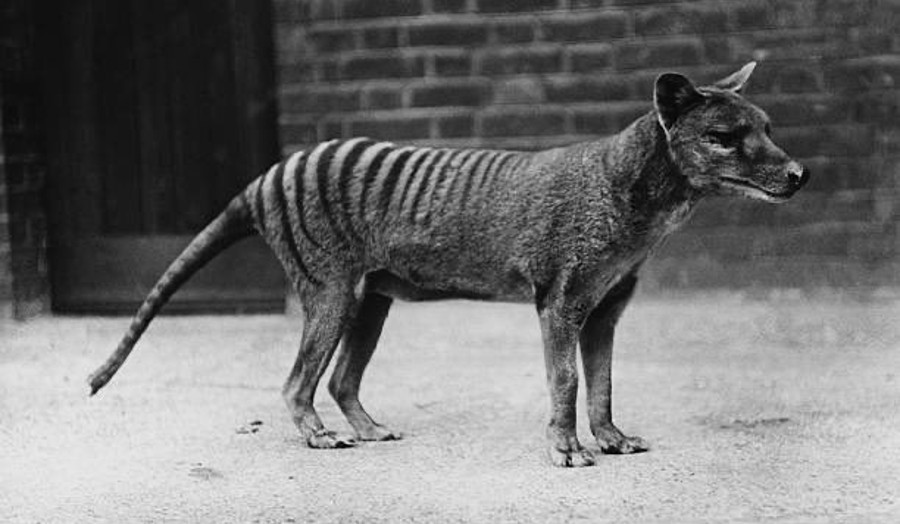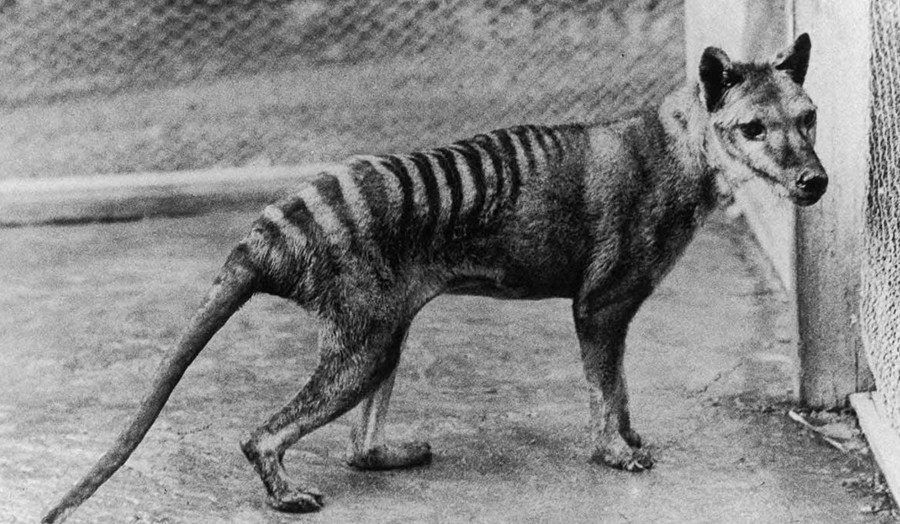The team behind Project Woolly Mammoth has added another extinct animal to their to-do list. The Thylacine, more commonly known as the Tasmanian tiger, seems to be in line for a comeback.
A collaboration between Texan-based Colossal Biosciences, and Harvard Medical School geneticist, George Church, are trying to bring back the Tasmanian tiger. The multimillion-dollar project is expected to deliver positive results in around ten years.
Ben Lamm, the founder of Colossal Biosciences, believes the first thylacines could come alive in about 10 years. Perhaps they are taking on this project because they need a win, given the timeline for the resurrection of the woolly mammoth is set to take considerably longer, largely due to the fact that elephants take longer to gestate (18 to 22 months). The thylacine’s estimated gestation is around 21 days.

The project aims to take stem cells from a living species with similar DNA and use gene editing to turn them into “thylacine” cells, or something close to them.
The Tasmanian tiger went extinct in 1936, but the thylacine was not officially declared extinct until 1982. Now a “de-extinction” company is set to reverse the disastrous decision made by the Tasmanian Government in 1888, when they introduced a bounty on what they considered “an easy scapegoat”.
The Tasmanian tiger was feared by the Tasmanian public. Hunters profited £1 per full-grown animal, and 10 shillings per juvenile animal they destroyed. The program extended until 1909 and resulted in the awarding of more than 2,180 bounties.
The National Museum of Australia estimates that at least 3,500 thylacines were killed through human hunting between 1830 and the 1920s.
While it is estimated there were around 5000 thylacines in Tasmania at the time of European settlement, due to excessive hunting, habitat destruction, and introduced disease, the species took on a rapid decline.
In a shift of public perception, that came too little too late, the tiger was granted protected status just 59 days before the death of the last known thylacine, which died from exposure – read neglect – in Hobart zoo on September 7, 1936.
Despite its fierce reputation, the tiger was semi-nocturnal and was described as shy, and avoided contact with humans.
The last surviving Tasmanian Tiger (named Benjamin) held in captivity at Beaumaris Zoo in Tasmania, Australia pic.twitter.com/toFBTuAqxA
— World's History (@syeda12857880) August 17, 2022
Scientists are planning to resurrect the Tasmanian Tiger that went extinct almost 100 years ago 😳 pic.twitter.com/EfhhwzTK87
— My Mixtapez (@mymixtapez) August 17, 2022



